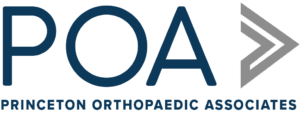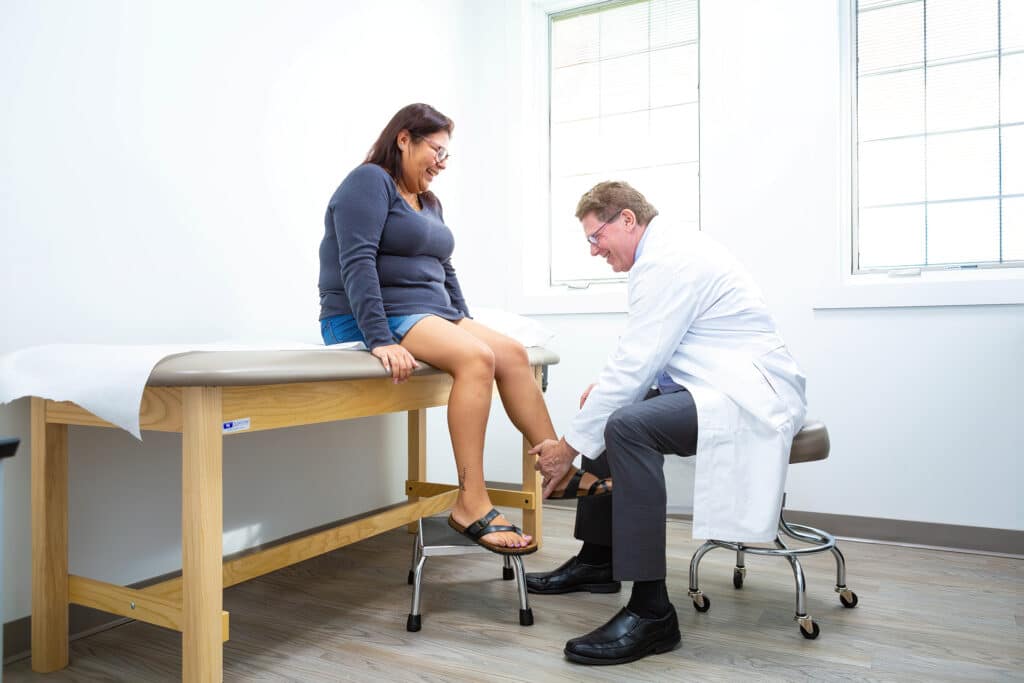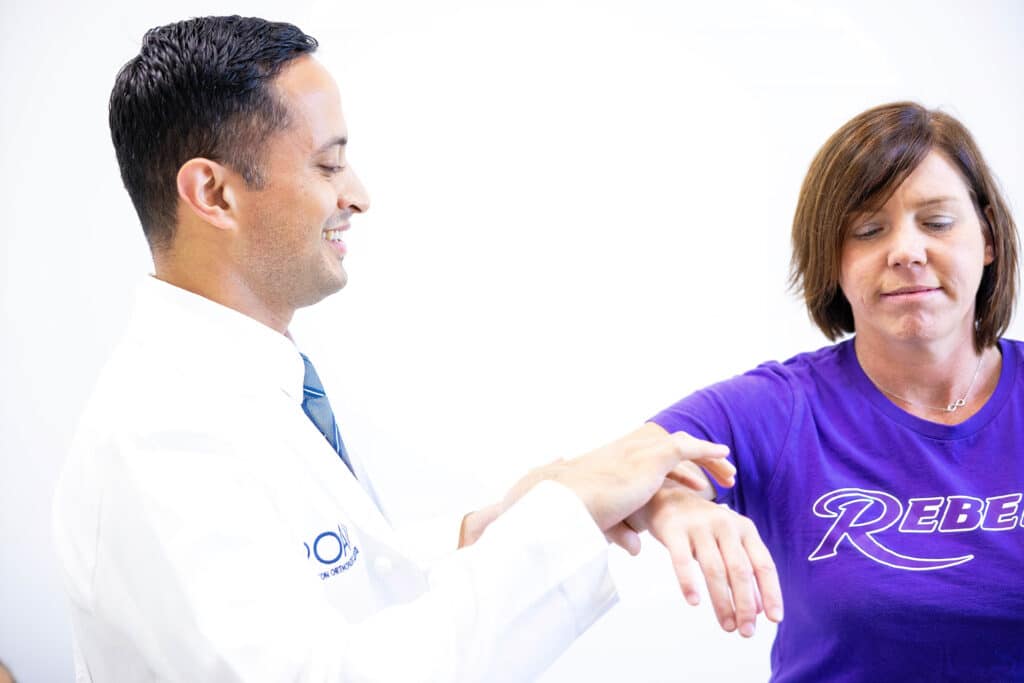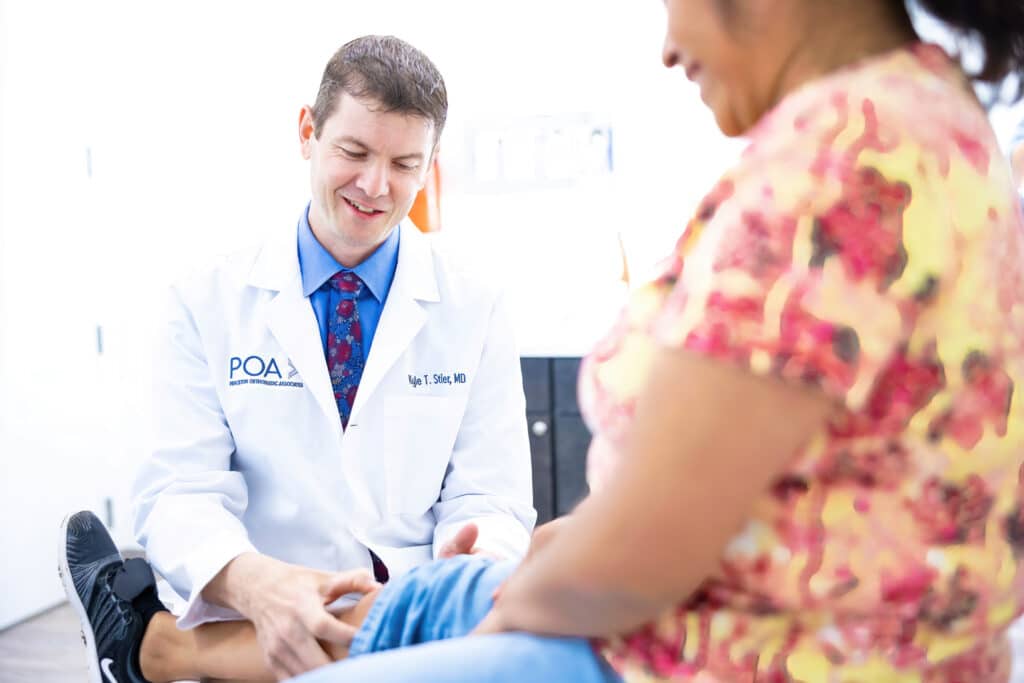
Book An Appointment
Physician Assistants
Physical & Occupational Therapists
KneeMRI ScansNon-OperativePhysiatry
Physical Therapy
Podiatry
Spine
Sports Medicine
TraumaUrgent Care
X-Ray Imaging

Often referred to as a “pulled muscle,” a muscle strain is actually a partially or completely torn muscle.
Muscle strain injuries occur most often:
A muscle strain happens when a muscle is stretched beyond its usual range of motion and begins to tear. These injuries occurs most often at the junction between the muscle and the tendon. However, a muscle strain can also occur within the muscle itself or in the tendon, where it attaches to the bone.
Muscles are often called our body's building blocks. Tendon attachments at each end of each muscle work together to provide the force required for movement. During activities that require explosive movements, like pushing yourself up during a squat or changing directions quickly in racquetball, too much force can tear connective tissue either partially or completely through.
Injuries commonly occur when the muscle becomes overworked and is stretched back further than is safe. Both the quadriceps, which involve the knee and hip, and the hamstrings, which involve both the hip and knee as well as parts of the ankle, are most prone to injury. Muscle strains in the hip adductor muscles are also common, even though they only cross the hip joint.
These factors can predispose an athlete to muscle strain injuries:
The symptoms of a muscle strain are:
Significant inflammation occurs when muscle is first injured. Then stem cells that live around the area of injury begin to regenerate muscle fibers, which aids the healing process.
When a muscle is injured, it goes into the inflammatory stage. This phase is marked by the beginnings of an immune system response following the injury and begins to repair the damage done to that muscle. But one significant thing that happens during this phase is that a great deal of scar tissue forms in that area of injury. Scar tissue isn't just fibrous, it's dense—and doesn't stretch and contract in the same way. Over time, this scar tissue begins to remodel into actual fibers with proper alignment, though they are far less elastic than healthy muscle fibers. It's thought that as a result of this type of remodeling a strained muscle becomes prone to further injury much more easily because of its structural weakness.



In most cases the diagnosis of a torn tendon is made based upon the patient's medical history and physical exam. In rare, grade 3 cases, the physician can actually feel the defect where the muscle has completely torn during an examination.
When patients come to the hospital with an indication of having a muscle injury, it is frequently difficult and/or costly to determine what the cause is without further investigative methods. Standard X-rays are beneficial in assessing fractures and dislocations. Occasionally in younger athletes, the tendon can pull off a piece of bone where it attaches, which can be seen on standard X-rays. However, simple muscular injuries cannot be seen on regular X-rays.
MRI's can sometimes be helpful in determining where the injury has occurred and whether it's a complete rupture or not. MRIs also show collections of blood called hematoma that sometimes occur following severe injuries.
The majority of muscle strains do not require surgery, and a full recovery is expected. If there is only a partial tear, then the athlete can return when they have stopped feeling pain during normal activity and have normal strength/flexibility in the affected area. A complete rupture means that an injured athlete may benefit from surgical repair.
Most acute muscle injuries are partial thickness tears (rather than complete tears). These cases can often be treated successfully with
After a week of these at-home treatments, many patients benefit by progressive functional physical therapy. The good news is: Most athletes are able to return to their previous level of competition after a muscle strain is fully healed. The bad news is: Since scar tissue forms at the site of injury, they may susceptible to another injury at that location.
